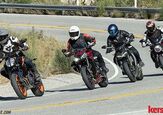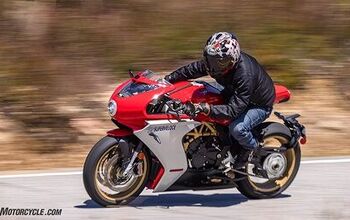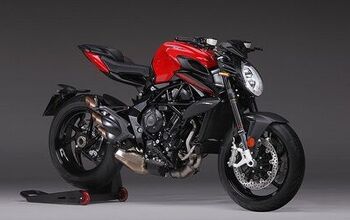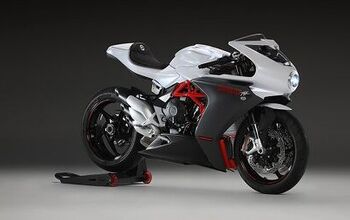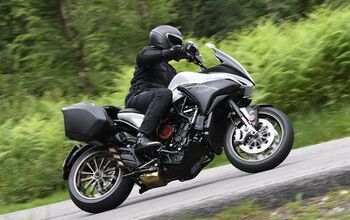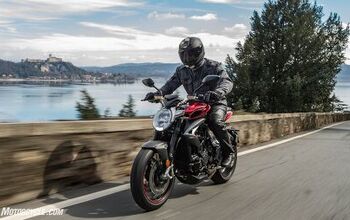MV Agusta Motorcycles
Count Giovanni Agusta, a young aristocrat with a passion for flying like so many in the era just after the Wright Brothers, founded the Agusta aeronautics company in 1907 in northern Italy, near today's Malpensa Airport. Business boomed during World War I. By 1927, the Count had died, the airplane biz had grown less profitable, and Count Domenico – son of Giovanni – decided to diversify into motorcycles.
The airplane business took off again during the Second World War, but when the war ended, airplane production was banned in Italy. Motorcycles thus became the primary focus, and Meccanica Verghera was established in 1945, in the village of Verghera. In fact, Count Domenico had seen the writing on the wall as early as 1943, and by that year an engine was already set to power the kind of inexpensive, simple machine an impoverished postwar Italy would need – a 98 cc two-stroke. They wanted to call the new motorcycle that would carry it "Vespa," but that name was already taken, and so the first bike was simply called MV 98.
In late October, 1945, the press was shown a preproduction model of the 98. It had a steel-tube rigid frame, a girder fork, 19-inch wheels and big letters on the gas tank: MV. The Turismo version – with three-speed gearbox and rear suspension – was so popular the Economica version was shortly dropped.
By 1947, racing was on, and Franco Bertoni won MV Agusta its first race at Carate Brianza, near Milan. In 1952, MV won its first world championship in the 125 cc class, and in September of that year, Leslie Graham won MV its first 500 cc Grand Prix, on the hallowed Monza circuit.
Yes MV Agusta made scooters, plenty of them – including the 1960 Chicco, with 155 cc two-stroke power.
Wiki says 583 750 S models were produced from 1970 to `75, and that, "When one of these rarities reaches the used vehicle market, very high prices are achieved." (John Burns photo)
The Ressurrection: Serie Oro F4.
New for 2016, this heavily revised naked benefitted greatly from an all-new chassis with increased stability and better suspension. A backward-rotating crankshaft in the 798 cc, 116-horsepower triple helps keep it quick-steering and precise. In the ensuing years, this great engine has found its way into a whole family of diverse 800s.
MV’s first attempt at sport-touring entered the picture in 2016, and one of its latest iterations is this SCS, featuring a hands-free American-manufactured Rekluse Smart Clutch System (SCS) in the 798 triple, along with the typical sexy Italian styling that includes lockable/removable hard saddlebags. That's Lusso for luxury, which there's plenty of in addition to MV's storied performance.

